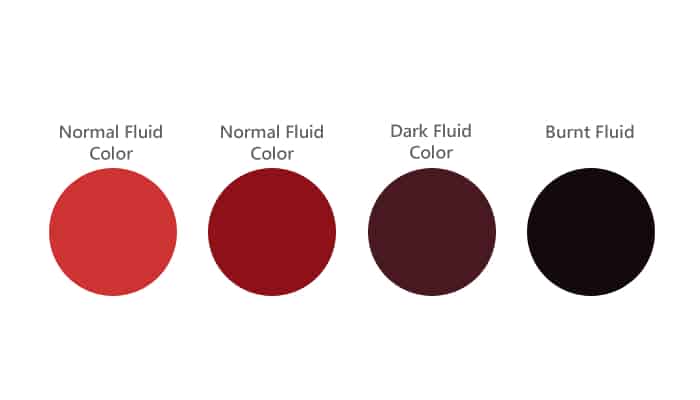Understanding Transmission Fluid for Your Acura MDX
When it comes to keeping your 2004 Acura MDX running smoothly, one of the most critical components to pay attention to is the transmission fluid. This fluid is essential for lubricating the moving parts of your transmission, ensuring smooth shifting, and preventing overheating. Let’s dive into what you need to know about the type of transmission fluid recommended for your vehicle.
Manufacturer’s Recommendations
| Popular posts |
|---|
| What to do to prolong the life of your manual gearbox |
| Automatic transmission: what it is, how it works |
For the 2004 Acura MDX, the manufacturer specifically recommends using Honda ATF-Z1 (Automatic Transmission Fluid). This fluid is formulated to meet the unique requirements of Honda and Acura vehicles, ensuring optimal performance and longevity of the transmission system.
Why Honda ATF-Z1?
Using the recommended Honda ATF-Z1 is crucial for several reasons:
- Compatibility: Honda ATF-Z1 is designed to work seamlessly with the internal components of your Acura’s transmission. Using a different fluid can lead to poor performance and even damage.
- Performance: This fluid provides excellent lubrication, which helps in reducing friction between the moving parts. This is vital for maintaining smooth gear shifts and overall transmission efficiency.
- Temperature Stability: Honda ATF-Z1 is engineered to withstand a wide range of temperatures, ensuring that your transmission operates effectively in both hot and cold conditions.
- Preventing Slippage: The right fluid helps to prevent slippage in the transmission, which can lead to erratic shifting and decreased performance.
Specifications of Honda ATF-Z1
Understanding the specifications of Honda ATF-Z1 can help you appreciate why it’s the best choice for your MDX:
- Viscosity: Honda ATF-Z1 has a viscosity rating that ensures it flows properly at various temperatures, providing adequate lubrication when needed.
- Friction Characteristics: The fluid is designed to maintain the right amount of friction, which is essential for smooth shifting and preventing clutch wear.
- Oxidation Stability: This fluid resists breakdown over time, which is crucial for maintaining the integrity of your transmission system.
- Seal Compatibility: Honda ATF-Z1 is formulated to be compatible with the seals and gaskets in your transmission, preventing leaks and ensuring a tight seal.
What Happens If You Use the Wrong Fluid?
Using a transmission fluid that doesn’t meet the specifications of Honda ATF-Z1 can lead to a host of problems:
- Increased wear on transmission components
- Overheating due to inadequate lubrication
- Erratic shifting or slipping gears
- Potential transmission failure, leading to costly repairs
In summary, sticking to the manufacturer’s recommendations for transmission fluid is not just a suggestion; it’s a necessity for the health of your 2004 Acura MDX. Always ensure that you are using Honda ATF-Z1 to keep your vehicle running at its best.
Recommended Oil Brands for Your Acura MDX Transmission Fluid
When it comes to maintaining your 2004 Acura MDX, choosing the right transmission fluid is essential. While Honda ATF-Z1 is the manufacturer’s recommendation, many owners have explored various brands that meet or exceed these specifications. Based on feedback from automotive forums and owner experiences, here are some recommended oil brands that Acura MDX owners have found reliable.
Honda Genuine ATF-Z1
It’s no surprise that many Acura MDX owners swear by Honda Genuine ATF-Z1. This fluid is specifically formulated for Honda and Acura vehicles, ensuring compatibility and optimal performance. Owners appreciate the peace of mind that comes with using the manufacturer’s product, as it reduces the risk of transmission issues.
Valvoline MaxLife ATF
Valvoline MaxLife ATF is another popular choice among Acura MDX owners. This fluid is designed for a wide range of vehicles and meets the specifications of Honda ATF-Z1. Many users report smoother shifting and improved performance after switching to Valvoline MaxLife. Additionally, its formulation helps in extending the life of the transmission, which is a significant plus for those looking to keep their MDX in top shape.
Mobil 1 Synthetic ATF
Mobil 1 Synthetic ATF has garnered a positive reputation in the automotive community. Many MDX owners have shared their experiences of using this synthetic fluid, noting its excellent temperature stability and resistance to oxidation. Users have reported that it provides smooth shifting and improved overall performance, especially in extreme driving conditions.
Royal Purple Max ATF
Royal Purple Max ATF is another high-performance option that has received favorable reviews from Acura MDX owners. This synthetic fluid is known for its superior lubrication properties and ability to reduce friction. Many users have noted that after switching to Royal Purple, they experienced noticeable improvements in shifting smoothness and overall transmission responsiveness.
Castrol Transmax Import Multi-Vehicle ATF
Castrol Transmax Import Multi-Vehicle ATF is designed for various import vehicles, including Honda and Acura models. Owners have reported that this fluid performs well in their MDX, providing reliable shifting and good protection against wear. Its versatility makes it a popular choice for those who may own multiple vehicles requiring different types of transmission fluids.
Amsoil Synthetic ATF
Amsoil Synthetic ATF is often recommended by enthusiasts for its high-quality formulation. Many Acura MDX owners have shared their positive experiences with this fluid, citing its ability to maintain performance over extended periods. Users appreciate its resistance to thermal breakdown, making it a solid choice for those who drive in demanding conditions.
Owner Feedback and Experiences
The experiences shared by Acura MDX owners on various forums provide valuable insights into the performance of these transmission fluids. Here are some common themes from owner feedback:
- Many owners emphasize the importance of sticking to fluids that meet Honda ATF-Z1 specifications to avoid potential issues.
- Several users have reported significant improvements in shifting performance after switching to synthetic options, particularly in colder climates.
- Many owners recommend regular fluid changes, regardless of the brand used, to maintain optimal transmission health.
- Some users have experienced better fuel efficiency after using high-quality synthetic fluids, which can be an added bonus.
In summary, while Honda ATF-Z1 is the go-to recommendation for your 2004 Acura MDX, several reputable brands can also provide excellent performance. Based on owner feedback and experiences, options like Valvoline MaxLife, Mobil 1 Synthetic, and Royal Purple Max ATF are worth considering. Always ensure that any fluid you choose meets the necessary specifications to keep your transmission running smoothly.
Change Interval for Your Acura MDX Transmission Fluid
Maintaining the right change interval for your transmission fluid is crucial for the longevity and performance of your 2004 Acura MDX. While the manufacturer may provide a general guideline, understanding the specifics can help you make informed decisions about your vehicle’s maintenance.
Recommended Change Interval
For the 2004 Acura MDX, the general recommendation for changing the transmission fluid is every 30,000 to 60,000 miles (approximately 48,000 to 96,000 kilometers). However, this can vary based on driving conditions and habits. Here are some factors to consider:
- Driving Conditions: If you frequently drive in stop-and-go traffic, tow heavy loads, or operate in extreme temperatures, you may need to change the fluid more often.
- Type of Driving: Highway driving typically puts less strain on the transmission compared to city driving, which can influence how often you should change the fluid.
- Fluid Condition: Regularly inspecting the fluid for color and smell can provide insights into its condition. Dark, burnt-smelling fluid is a sign that it needs to be changed.
Partial Transmission Oil Changes
When it comes to changing transmission fluid, many owners may wonder about the feasibility of a full oil change. In most cases, a complete transmission fluid change involves removing the transmission pan and draining the fluid, which can be labor-intensive and costly. This is where partial transmission oil changes come into play.
What is a Partial Transmission Oil Change?
A partial transmission oil change, also known as a fluid exchange, involves replacing a portion of the old fluid with new fluid without completely draining the transmission. This method can be beneficial for several reasons:
- Cost-Effective: Partial changes are generally less expensive than full fluid changes, making them more accessible for regular maintenance.
- Less Labor-Intensive: Since it doesn’t require removing the transmission pan, it can be completed more quickly.
- Improved Fluid Quality: Regular partial changes can help maintain better fluid quality over time, as it continuously introduces fresh fluid into the system.
Justification for Partial Changes
Statistical data and expert opinions support the practice of partial transmission fluid changes. According to the Automatic Transmission Rebuilders Association (ATRA), regular fluid exchanges can help extend the life of the transmission. They emphasize that even partial changes can significantly improve the condition of the fluid and the overall performance of the transmission.
Additionally, a study published by the Society of Automotive Engineers (SAE) found that maintaining clean transmission fluid is vital for reducing wear on internal components. The study concluded that regular fluid changes, whether partial or full, can lead to a decrease in transmission failures and costly repairs.
Conclusion on Change Intervals and Partial Changes
Understanding the change interval for your Acura MDX’s transmission fluid and the benefits of partial changes can help you make informed maintenance decisions. Regularly changing the fluid, whether fully or partially, is essential for keeping your transmission in optimal condition and avoiding potential issues down the road.
What Color Should Transmission Fluid Be?


